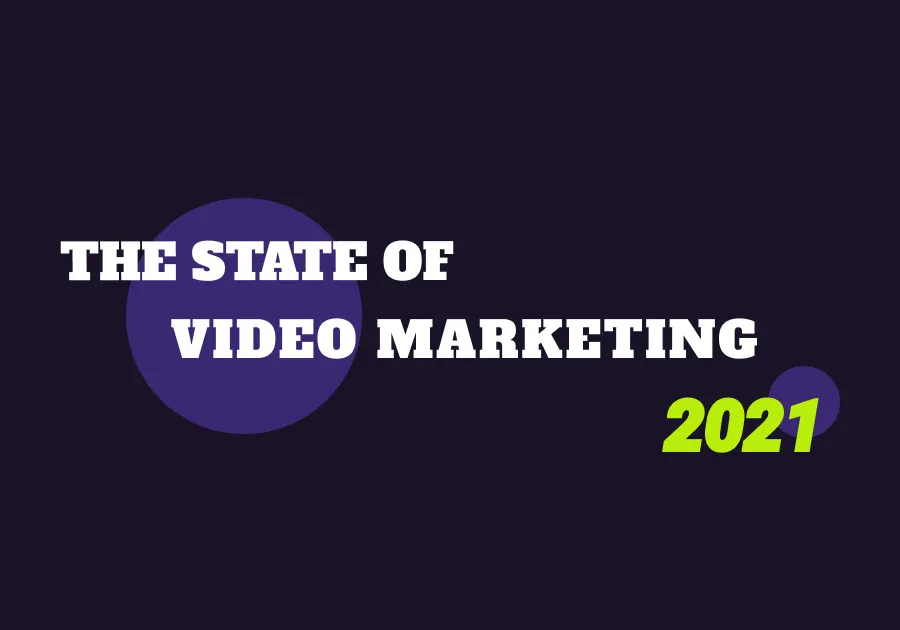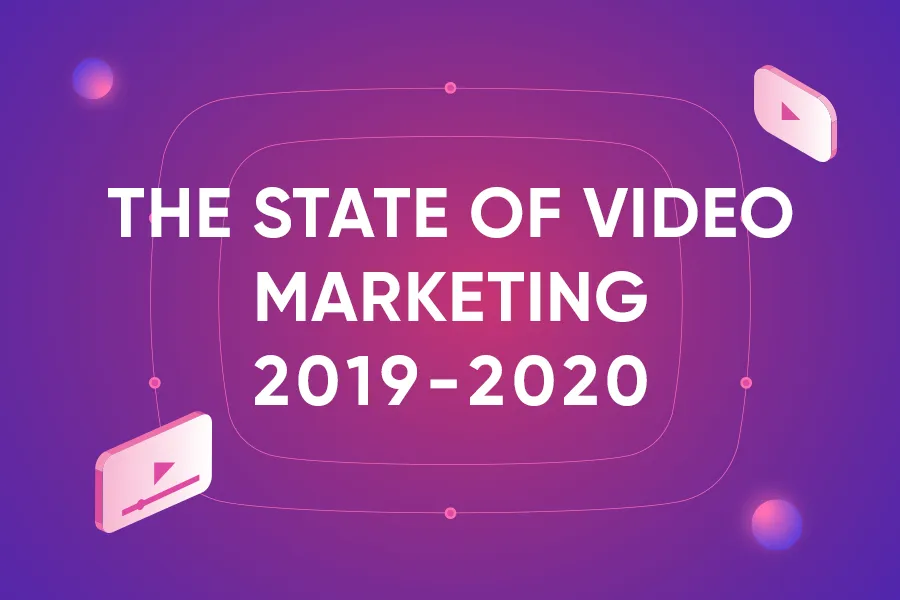The State of Video Marketing 2019-2020: Numbers, Statistics, and Trends
If a decade ago someone told you that videos would be at the forefront of a successful marketing strategy or a campaign, you may have been doubtful. Who could imagine that on the brink of the 20’s, TVs would be replaced by internet platforms like YouTube or that 70% of people would start watching all videos from tablets and smartphones?
The changes that took place in just 10 years are thrilling and the pace at which video content keeps developing is (believe it or not) only accelerating daily. Over the past three years, the number of businesses using video as a marketing tool has grown by 24%, from 63% to 87%. What this means is that in the new decade, video content might reach all-time highs.
Considering such a state of affairs, companies and professionals who’d like to achieve success or at least keep the lights on should definitely know what’s happening to video marketing right now and where it is heading. To guide you through the most interesting facts and figures, we’ve analyzed all the latest studies and created an infographic on the state of video marketing in 2019 and 2020.
Video marketing trends to watch for in 2020
Producing more vertical content
A huge part of our lives is spent on social media. We message each other, find out news, meet new friends, and even shop there. Not surprisingly, more and more brands allocate resources into social media management.
In this vein, there’s a huge competition among brands trying to conquer their audience’s attention. Simply reaching your existing clients and potential customers is not enough. You should also aim to engage with them and this goal can be achieved by presenting data in a format that’s most convenient for them.
In a mobile-first era, vertical format is the preferred way of information consumption and Wyzowl’s annual study has proved this statement. According to it, 87% of people usually hold their phone vertically. There’s also other good news for marketers:
- 95% of the message is retained by viewers when watching a video
- vertical videos tend to show a 90% completion rate
What’s even more exciting, vertical videos will become even bigger and finally become one of the major visual trends in 2020. However, to keep the viewer’s attention, they should be short and to the point.
Cutting down the video length
With a constantly growing number of products and services on the global market, people turn to brands that manage to grab their attention. They don’t want to waste time reading long descriptions or watching long explanatory tutorials and that’s the reason why 73% of marketing videos are less than two minutes long.
2019 has been a year when brands started to actively repurpose longer videos into bumper ads. For viewers, a six-second-long video is enough to get the message. Meanwhile, for brands, bumper ads are a cost-effective tool of promotion that helps achieve the upper-funnel goals such as increasing brand awareness.
Thus, if you aim to stay ahead of the curve in 2020, you should probably pay attention to this popular format already used by a range of international brands.
Adding videos to omnichannel experience
As you might have realized, using videos for marketing is a powerful strategy that is bound to give you a boost. However, if you make them a part of a campaign that provides omnichannel experience, you may break new grounds.
Unlike multichannel experience, omnichannel aims to provide applicable content at the right time and requires more accurate tailoring and research. This strategy also perfectly works together with the trend of personalization and helps you discover even more experimental and unconventional marketing ways.
For instance, Google’s in-depth research has revealed three unexpected ways people turn to video while shopping in-store:
- 55% of respondents said they use online videos instead of shopping lists
- people watch video in-store to feel more comfortable and confident
- over 50% of people watch how-to videos to choose a brand or a product to buy
In short, in 2020, you should aim to provide people with short and concise DIY’s, how-to’s and other types of explanatory videos that make your existing and potential clients more comfortable with making a choice.
Now, let’s proceed to some interesting facts and figures on the current state of video marketing.
The state of video marketing in 2019-2020 [Infographic]

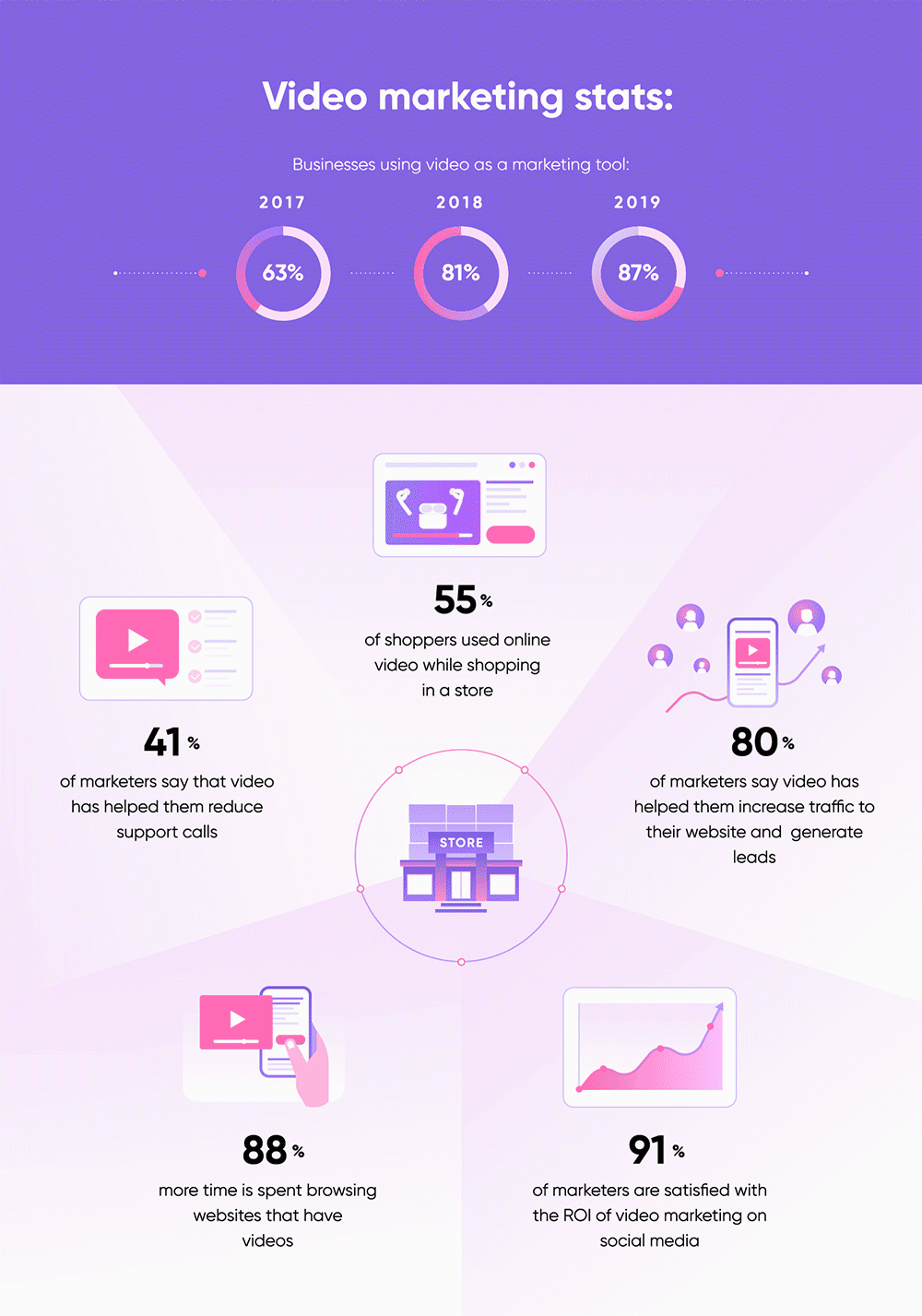
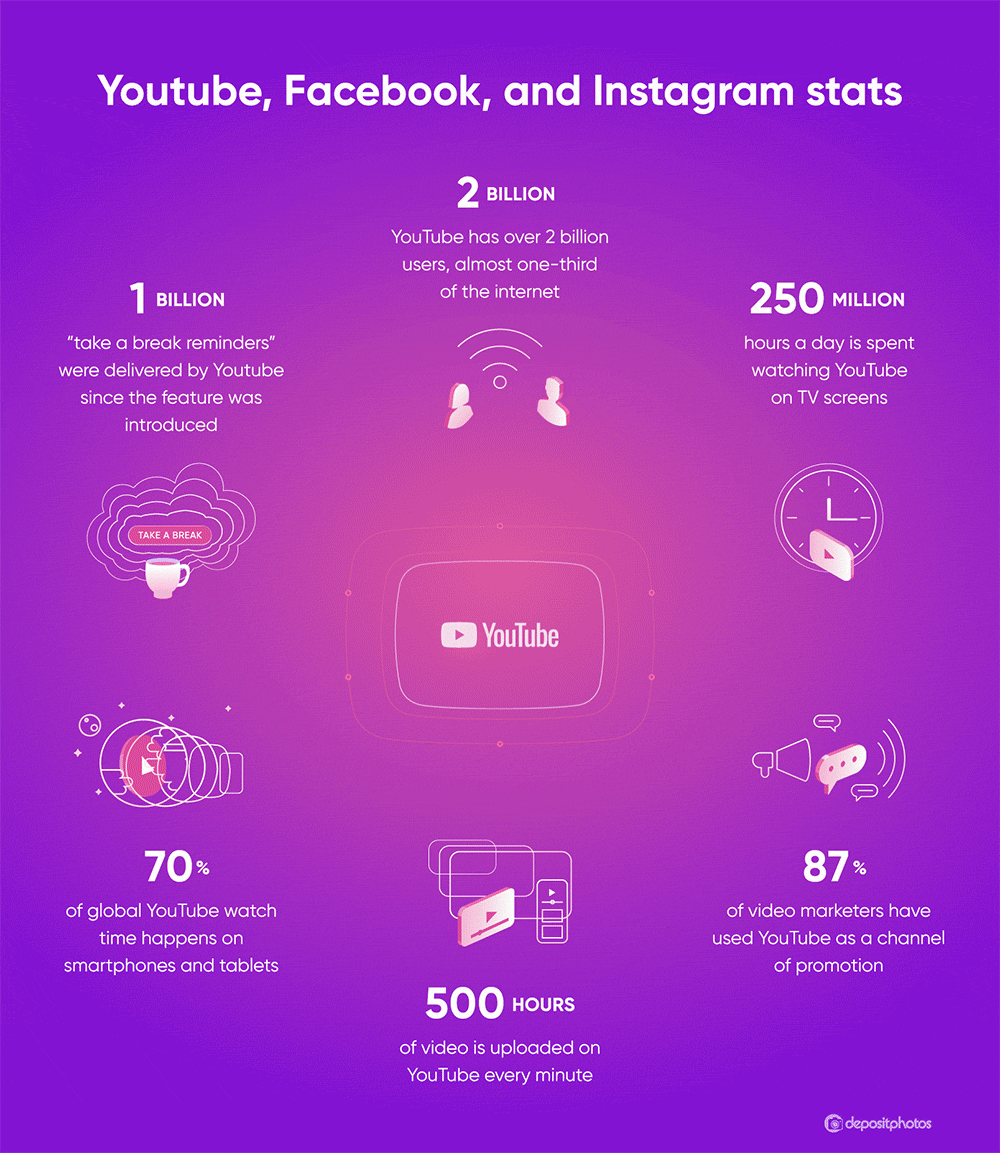

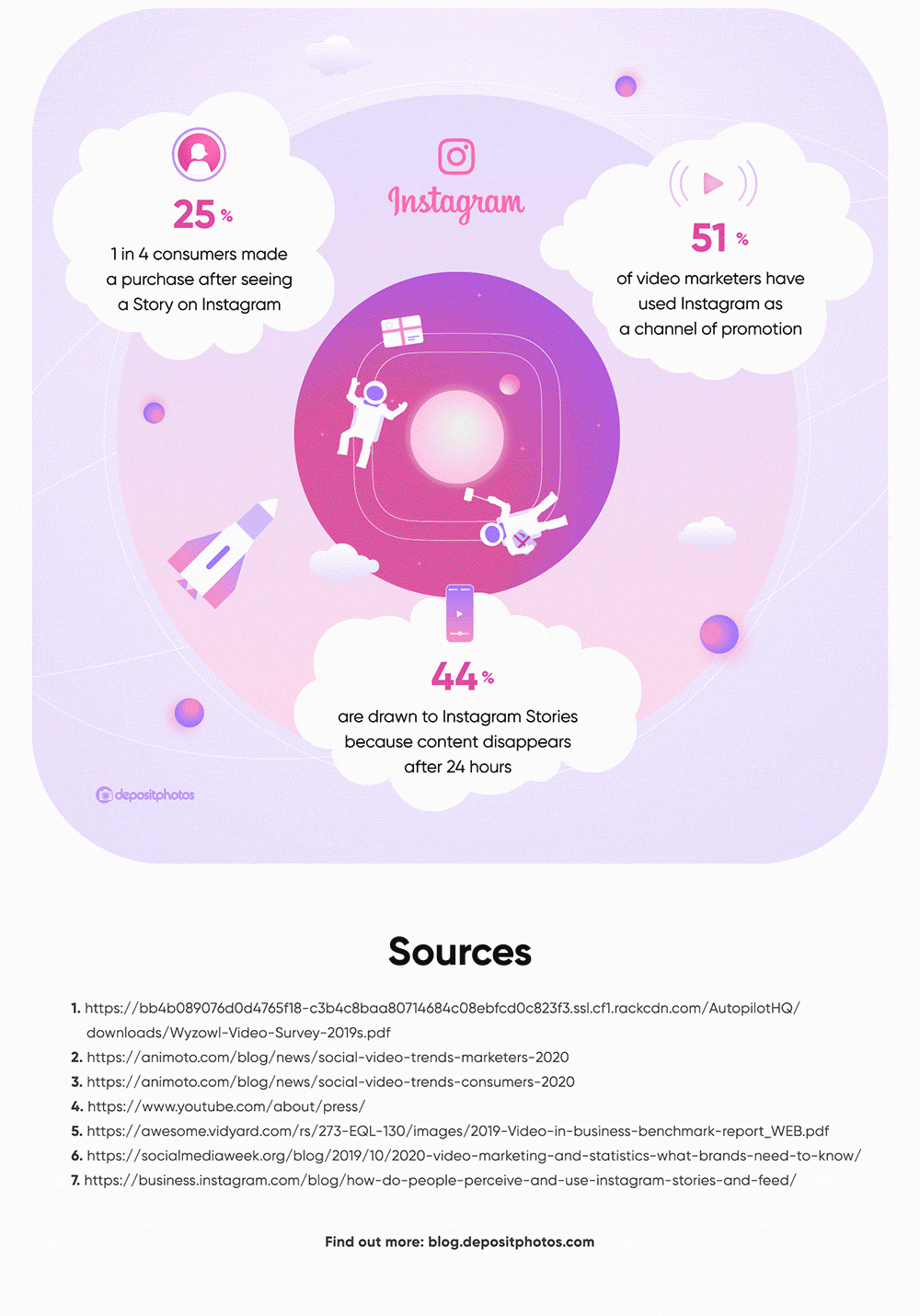
There’s one more thing you should know before kicking off your 2020 marketing campaigns: by 2022, 82% of all consumer internet traffic will come from videos, according to Cisco.
Armed with all this knowledge and implementing the 2020 video marketing trends that are particularly relevant to your product or services, you will definitely achieve your KPI’s. You might also spread the word about your brand within professional communities and build a strong case for using videos as a marketing tool.




